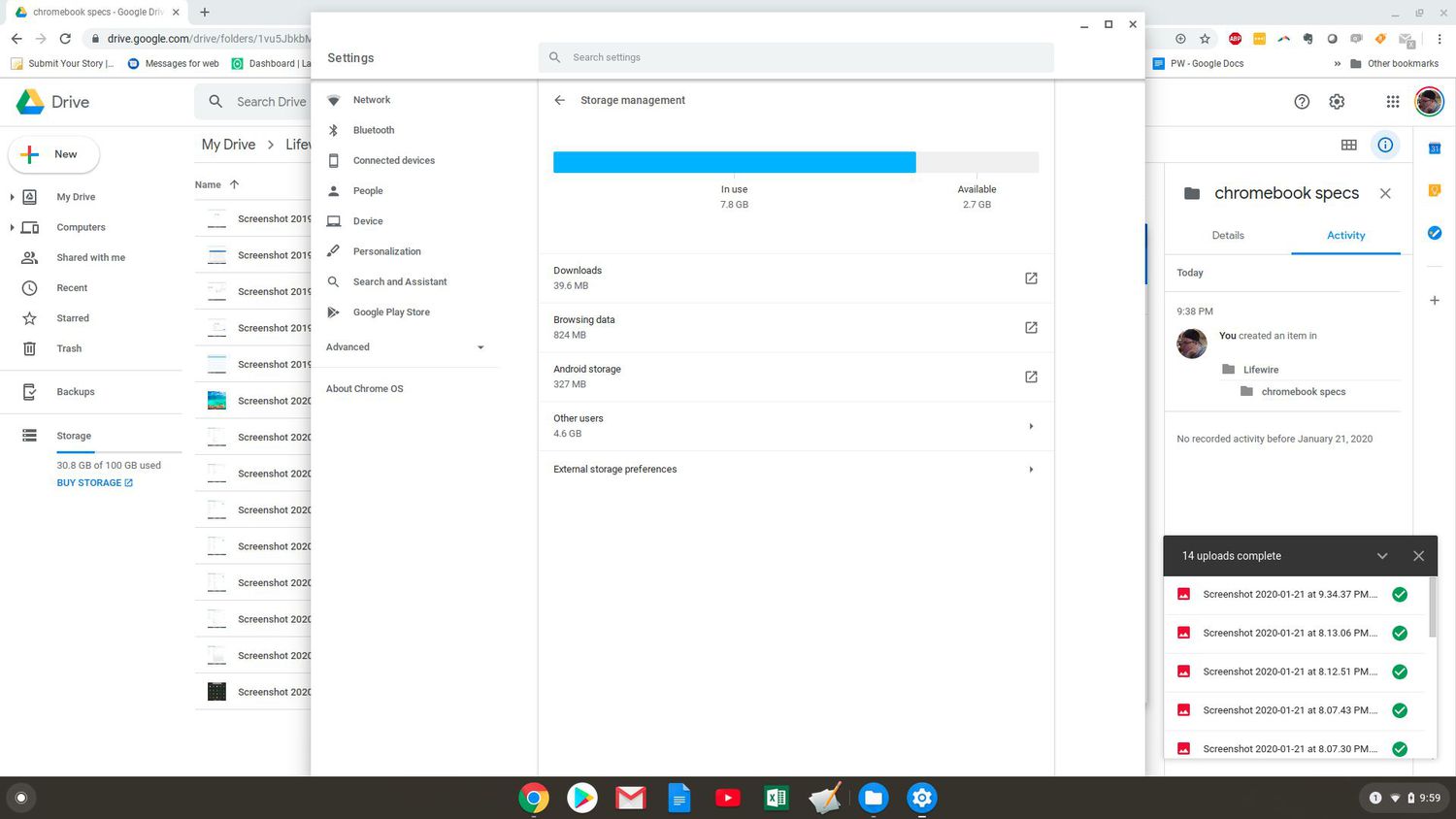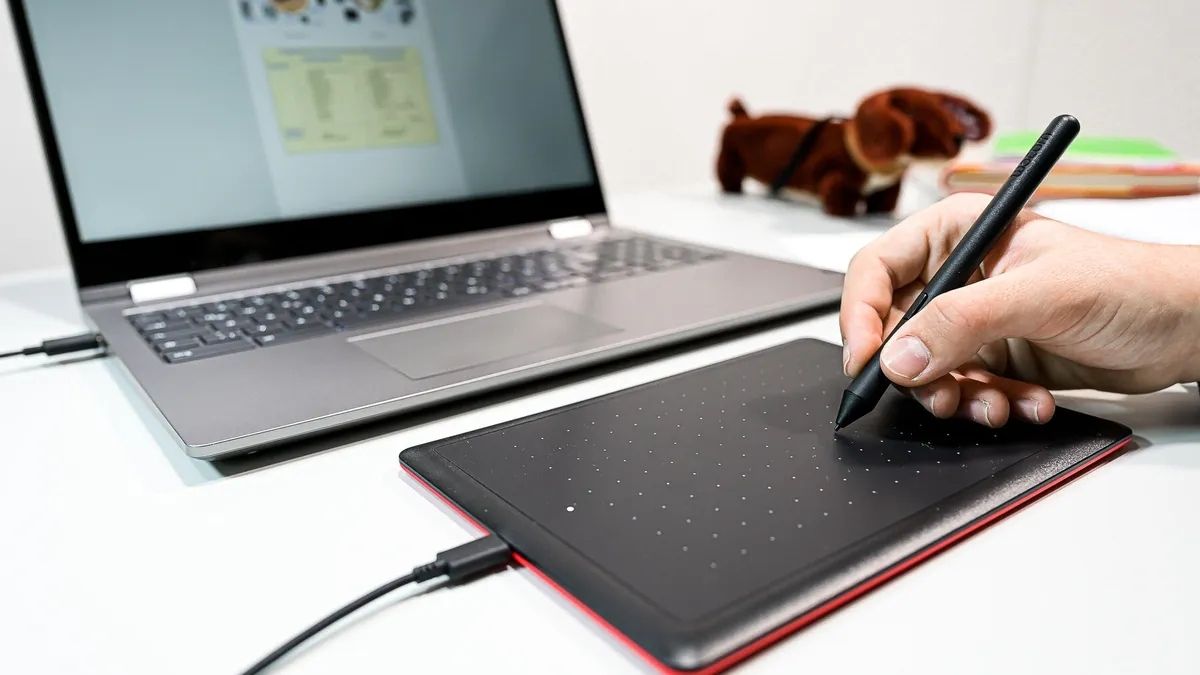Introduction
Chrome OS, developed by Google, is a popular operating system known for its simplicity, security, and speed. It is designed to work seamlessly with Google's suite of applications and services, making it a preferred choice for users who rely on cloud-based computing. Whether you are a Chromebook user or simply curious about the Chrome OS version, knowing how to check the version can be beneficial for various reasons.
Understanding the Chrome OS version is essential for staying informed about the latest updates and features. Google regularly releases updates to improve performance, security, and functionality, and being aware of your current version ensures that you can take advantage of these enhancements. Additionally, troubleshooting issues and seeking support often require knowledge of the Chrome OS version, making it a valuable piece of information for both casual users and tech enthusiasts.
In this article, we will explore three straightforward methods to check the Chrome OS version. Whether you prefer using the system settings, the Chrome browser, or the Chrome OS Developer Shell (Crosh), you will find a suitable approach to retrieve this essential information. By familiarizing yourself with these methods, you can effortlessly stay up to date with the latest Chrome OS version and make informed decisions about your device's maintenance and usage. Let's dive into the step-by-step processes to uncover the version of your Chrome OS.
Method 1: Using Settings
One of the simplest ways to check the Chrome OS version is by accessing the system settings. This method provides a user-friendly approach, making it accessible to all Chromebook users, regardless of their technical expertise. Here's a step-by-step guide to uncovering your Chrome OS version through the settings menu:
-
Accessing Settings: Begin by clicking on the system tray located in the bottom-right corner of the screen. This will open the quick settings panel. From there, click on the gear-shaped icon labeled "Settings" to enter the Chrome OS settings menu.
-
Navigating to About Chrome OS: Within the settings menu, scroll down to find the "About Chrome OS" option. This section contains essential information about your device, including the current version of the Chrome OS.
-
Viewing the Version: Upon selecting "About Chrome OS," you will be presented with detailed information about your device's current version, including the version number, build details, and additional technical specifications. The version number typically follows a format such as "XX.XX.XXXX.X" (e.g., 91.0.4472.165).
By following these simple steps, you can quickly retrieve the Chrome OS version through the settings menu. This method offers a straightforward and intuitive way to access essential system information, empowering users to stay informed about their device's software status.
Checking the Chrome OS version through the settings menu is particularly useful for individuals who prefer a graphical interface and a familiar navigation experience. It eliminates the need for complex commands or technical knowledge, making it accessible to users of all levels. Whether you are a casual Chromebook user or a tech-savvy enthusiast, the settings method provides a convenient way to stay updated with the latest Chrome OS version.
In addition to checking the version, the settings menu also offers access to various other system details, allowing users to explore additional information about their Chromebook. This inclusive approach enhances the overall user experience, promoting transparency and accessibility within the Chrome OS environment.
Overall, utilizing the settings method to check the Chrome OS version aligns with the system's user-centric design, prioritizing simplicity and ease of use. By leveraging this intuitive approach, users can effortlessly stay informed about their device's software status and make informed decisions regarding updates and maintenance.
Method 2: Using Chrome Browser
Another convenient method to check the Chrome OS version involves utilizing the Chrome browser itself. This approach offers a seamless way to access essential system information, leveraging the familiarity and accessibility of the browser interface. By following these straightforward steps, users can effortlessly uncover their Chrome OS version directly through the Chrome browser:
-
Opening Chrome Browser: Begin by launching the Chrome browser on your Chromebook or any other device running Chrome OS. The browser serves as a versatile platform for various tasks, including accessing system information such as the Chrome OS version.
-
Entering the URL: Once the browser is open, navigate to the following URL:
chrome://system. This special URL provides access to a wealth of technical details and system information, offering users a comprehensive view of their Chrome OS environment. -
Locating the Version Information: Upon entering the
chrome://systemURL, you will be presented with a detailed page containing various system details. Look for the section labeled "version" or "cros-version." Within this section, you will find the specific version number of your Chrome OS, typically displayed in a format such as "XX.XX.XXXX.X" (e.g., 91.0.4472.165).
By following these simple steps, users can efficiently retrieve the Chrome OS version directly through the Chrome browser. This method leverages the browser's interface to provide a user-friendly and accessible approach to accessing essential system information.
Utilizing the Chrome browser to check the Chrome OS version aligns with the platform's seamless integration of system details within a familiar and widely-used application. This approach caters to users who prefer leveraging the browser for various tasks, consolidating essential system information within a single, versatile interface.
In addition to checking the version, the chrome://system page offers access to a wide range of technical details, allowing users to delve deeper into their Chrome OS environment. This comprehensive view enhances users' understanding of their device's software status, empowering them to make informed decisions regarding updates and maintenance.
Overall, the method of using the Chrome browser to check the Chrome OS version exemplifies the platform's commitment to accessibility and user-centric design. By seamlessly integrating system information within the browser interface, users can effortlessly stay informed about their device's software status, contributing to a seamless and intuitive user experience.
Method 3: Using Crosh (Chrome OS Developer Shell)
For users who are comfortable with a more technical approach, accessing the Chrome OS version through Crosh (Chrome OS Developer Shell) provides a comprehensive method to retrieve essential system information. Crosh serves as a command-line interface within Chrome OS, offering a range of advanced functionalities and system diagnostics. By following the steps outlined below, users can leverage Crosh to uncover their Chrome OS version with precision and technical insight.
-
Accessing Crosh: To initiate Crosh, press
Ctrl + Alt + Ton the keyboard. This key combination opens the Crosh terminal, providing users with a direct interface to interact with the Chrome OS command-line environment. Upon accessing Crosh, users will be presented with a command prompt, signaling readiness to execute commands and retrieve system information. -
Entering Version Command: Within the Crosh terminal, enter the following command:
shelland pressEnter. This command allows users to access the Chrome OS shell, enabling the execution of advanced system commands and diagnostics. Once the shell is accessed, users can proceed to enter the following command to retrieve the Chrome OS version:cat /etc/lsb-release. -
Viewing the Version Information: Upon entering the command
cat /etc/lsb-release, the terminal will display detailed information about the Chrome OS, including the version number, build details, and additional technical specifications. The version number typically follows a format such as "XX.XX.XXXX.X" (e.g., 91.0.4472.165), providing users with precise insight into their device's software status.
By leveraging Crosh to check the Chrome OS version, users gain access to a powerful and technical method of retrieving essential system information. This approach caters to individuals with a penchant for command-line interfaces and advanced system diagnostics, offering a comprehensive view of the Chrome OS environment.
Utilizing Crosh aligns with the platform's commitment to providing advanced functionalities and technical transparency, empowering users to delve into their device's software status with precision and depth. The command-line interface of Crosh serves as a gateway to advanced system commands, enabling users to explore and understand their Chrome OS environment in a detailed and technical manner.
In addition to checking the version, Crosh offers access to a wide range of advanced system diagnostics and commands, allowing users to perform in-depth analyses and troubleshooting tasks. This technical depth enhances users' understanding of their Chrome OS device, catering to individuals who seek detailed insights and precise system information.
Overall, the method of using Crosh to check the Chrome OS version exemplifies the platform's commitment to technical transparency and advanced system functionalities. By providing a direct interface to interact with the Chrome OS command-line environment, Crosh empowers users to gain precise insight into their device's software status, contributing to a comprehensive and technical user experience.
Conclusion
In conclusion, the ability to check the Chrome OS version is an essential aspect of maintaining and understanding your Chromebook or Chrome OS device. By exploring the three distinct methods outlined in this article, users can effortlessly retrieve their Chrome OS version through user-friendly settings, the familiar Chrome browser interface, or the advanced technical environment of Crosh (Chrome OS Developer Shell).
The methods presented cater to a diverse range of users, accommodating varying preferences and technical proficiencies. The settings method offers a straightforward and intuitive approach, ideal for casual users and those who prefer graphical interfaces. Leveraging the Chrome browser to access the Chrome OS version aligns with the platform's seamless integration of system details within a widely-used application, providing a convenient and accessible method for users. On the other hand, utilizing Crosh caters to individuals with a penchant for technical depth and advanced system diagnostics, offering a comprehensive view of the Chrome OS environment.
By staying informed about the Chrome OS version, users can proactively engage with system updates, security enhancements, and feature improvements. This knowledge empowers users to make informed decisions regarding their device's maintenance, troubleshooting, and overall usage. Whether seeking support, troubleshooting issues, or simply staying up to date with the latest software advancements, knowing the Chrome OS version is a valuable asset for all users.
The inclusive nature of these methods reflects the user-centric design of Chrome OS, prioritizing accessibility and transparency in accessing essential system information. Regardless of individual preferences or technical expertise, users can leverage these methods to gain insight into their device's software status, contributing to a seamless and informed user experience.
In essence, the ability to check the Chrome OS version is not only a practical necessity but also a gateway to understanding and engaging with the dynamic ecosystem of Chrome OS. By embracing these methods, users can navigate their Chromebook or Chrome OS device with confidence, equipped with the knowledge of their device's software status and the means to stay informed about the latest developments within the Chrome OS environment.

























